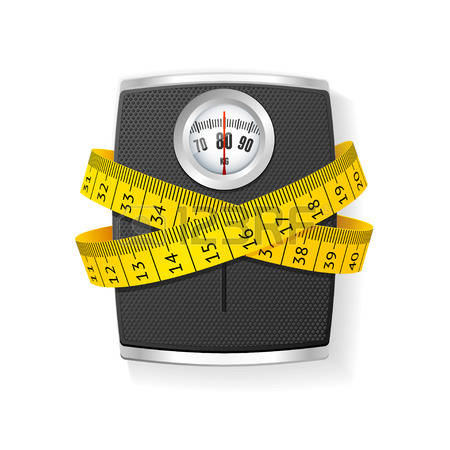Here’s some good news: You can stop glaring at your bathroom scale. Knowing your body composition ratio is a much more accurate and objective measure of health and fitness than your weight.
Weight is an unreliable and often deceptive indicator in measuring your baseline health and the effectiveness of your fitness program because your body weight can change by a lot—day to day, hour by hour—simply from the foods you eat. A salty meal can leave you bloated and unable to button your favorite jeans, and a night of unhealthy foods can leave you constipated and heavier.
When you’re working out to improve your health and fitness, as well as shrink your waistline, you need a reliable way to measure your progress. Again, body composition wins out over body weight. As you lose fat, you’ll be gaining muscle—in fact, it not uncommon to gain weight when you start strength training before you eventually begin to lose weight.
Does muscle weigh more than fat?
No! A pound of muscle is equal to a pound of fat. The difference between muscle and fat is in volume: Body fat takes up about 3 to 4 times the volume of muscle. This is why you’ll tighten and shrink your body as you get fit, even if your weight isn’t dropping dramatically.
The limits of BMI
You’re probably familiar with your place on the Body Mass Index, or BMI. A common yardstick for weight and health, BMI is a measurement system based on body weight and height that is used frequently by doctors, nutritionists, and other health professionals. Both Body Composition and BMI seek to measure the same thing, for the same reason: the amount of fat in your body, as an assessment of your health. Body composition, however, provides a much more accurate measurement of body fat than body weight. The reason? Measuring weight against height doesn’t take into account where your body weight comes from. You might have a lot of muscle and a very healthy amount of fat, but be considered “overweight” by the height/weight charts used to measure BMI. Of course, the opposite can also be true. Your body can carry a lot of fat and little muscle. In this case, you might not register as overweight on the BMI, but your body is “over fat” nonetheless.
Measuring your body composition
With a few simple measurements, you can assess your body composition on your own. All you need is a tape measure! You’ll be taking two sets of measurements. The first measurement is the Waist-to-Hip Ratio (WHR). This is a useful tool in measuring your fat distribution and gauging health. The second set is made up of your Girth Measurements. Once you’ve taken these measurements, you can refer to them as you track your progress during the phases of Outdoor Fitness. Be prepared to see some numbers drop!
Waist to Hip Ratio
• Take your waist measurement. The tape should go around the narrowest part of your waist. Relax, exhale, and take the measurement.
• Take your hip measurement around the widest part of your buttocks. Make sure the tape is snug against your skin, but not tight.
• Divide your waist measurement by your hip measurement to arrive at your WHR.
Example:
• Waist: 28 inches
• Hips: 36 inches
• WHR: .78
What does my WHR mean?
Generally, a healthy WHR is below 0.9 for men and below 0.8 for women—anything over 1.0 means your waistline is wider than your hips. Waist sizes over 40” for men or over 35” for women are associated with greater health risk.
Girth measurements
Using your cloth tape measure designed for girth measurement, measure around several points of your body. For accuracy, you must be consistent in both tape placement and tension.
Measure the right side only of the following body parts: calf, thigh, hips, waist, chest, upper arm, and wrist.
Calf in inches___ Thigh size in inches:______ Hip size in inches:____ Waist size in inches:_____ Chest size in inches:_____ Upper arm size in inches:_____ Wrist size in inches:______
Back To Blog

